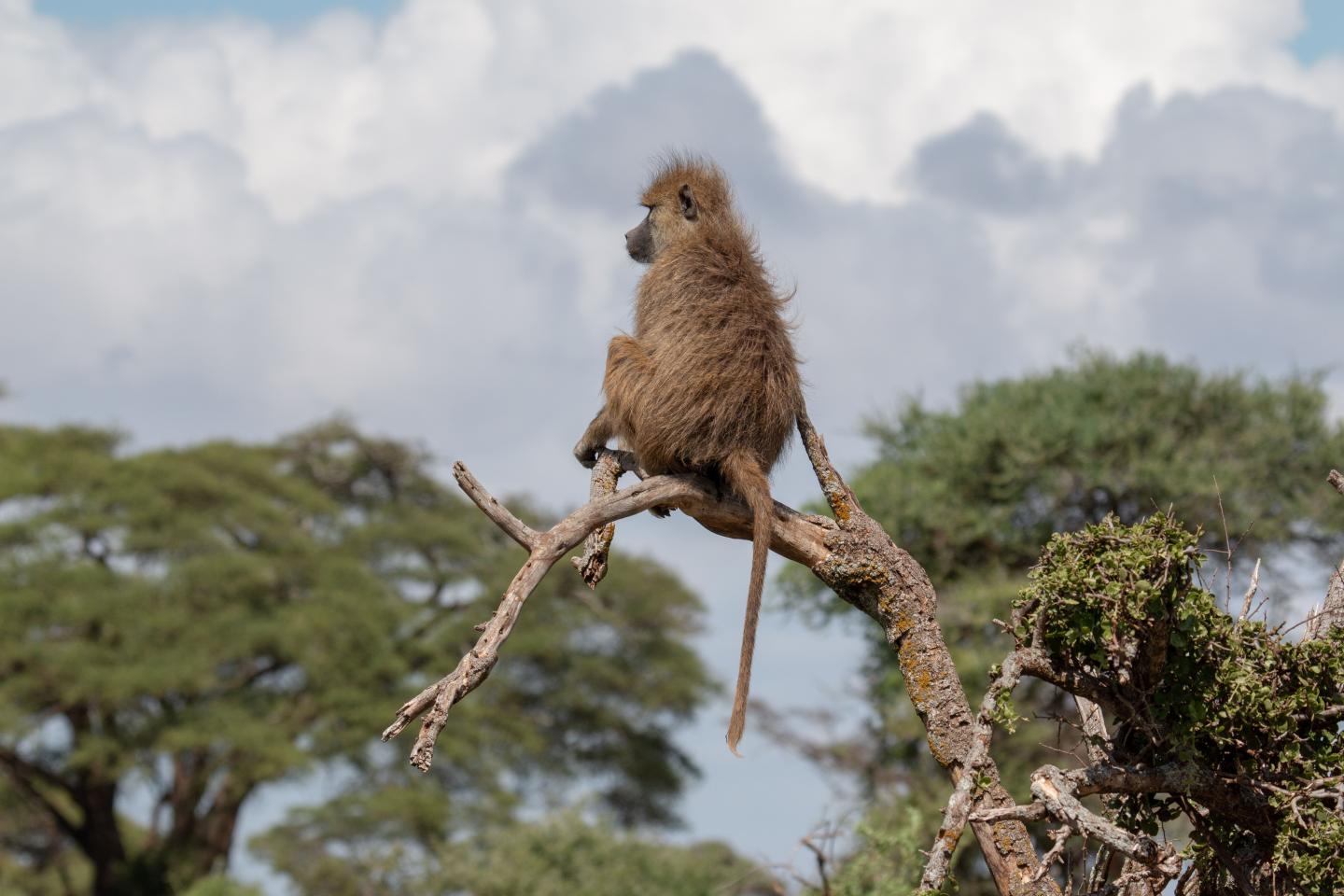Baboon poop shows how chronic stress shortens lives
Biologists tracked 300 baboons from life to death and found some interesting insights.

In the Kenyan savannah, amongst the fever trees and north of towering Mt. Kilimanjaro, female baboons are stressed out—and it may be leading them to an early death. Caused by complex hierarchical social structures, strong seasons of drought and rainfall, or reproductive states like pregnancy, female baboons with higher levels of the stress hormones throughout their lives have a greater risk of dying than those with low levels.
“We do think that the social environment, it has the potential to be the most chronic form [of stress],” says Fernando Campos, lead study author and Assistant Professor of Biological Anthropology at The University of Texas at San Antonio. “You’re sitting low in the hierarchy, you’re always being displaced from food, you’re always being picked on, or always having to look out for others that might feel aggression toward you—this has real potential to be a source of chronic stress.”
As part of one of the longest studies of wild primates in the world, scientists at the Amboseli Baboon Project have been tracking the moves of some 300 baboons from the day they’re born to the day they die, and testing their poop repeatedly. Data collection for this study has been going on in some form since 1999. Researchers can easily dart into the environment and collect droppings without disturbing the animals, then test the feces for levels of glucocorticoids, a group of hormones that react to stressful challenges.
With these long-term results, they were able to show that female baboons with higher levels of glucocorticoids tended to die younger. Campos and his colleagues developed a model that showed consistently high levels of glucocorticoids could reduce lifespan by 5.4 years, or about a quarter of a baboon’s 19-year life expectancy. They published their results recently in the journal Science Advances.
This research shows that stress-regulating hormones can be a double-edged sword when it comes to health.
“It’s essential—if you didn’t have a stress response you wouldn’t be able to prepare the body or respond to things that are dangerous in the environment,” Campos explains. “But on the other hand there is potential for this to have costs that accumulate over time. If your stress response is overactive, if you’re over-secreting glucocorticoids there’s this potential for it to be pathogenic and lead to a shorter lifespan.”
[Related: The inside scoop on Charmin’s fake poop (and how it helps keep your butt clean)]
These findings are in line with previous research, which has shown that increased glucocorticoid levels can lead to adverse health effects like cardiovascular disease and impaired immune function.
Some researchers argue that chronic stress does not shorten the lives of wild animals as it does animals in labs, because in the wild stress is a natural response to threats like predators that they would be worse off without. However, this study—which is the first of its type to study in wild animals—shows the connection between glucocorticoids and evolutionary fitness. These results could be used to validate data that looks at the health effects of glucocorticoids both in lab animals and in wild species.
The study only looked at females baboons because their male counterparts are much harder for biologists to track over a lifetime. Male baboons move from group to group to prevent interbreeding, a common phenomenon in group-living mammals called sex bias dispersal, while female baboons stay in the same group their whole lives.
Though Campos advises caution about extrapolating the evidence to humans, he says baboons do make an excellent model for studying the connections between stress hormones and lifespan in people, due to similarities in social structure and proven similar health responses to glucocorticoids in both species.
“There’s a potential for social environments to impose a kind of chronic stress, like being low in the hierarchy in baboons, for example. People argue that that’s kind of similar to chronic stresses that humans experience because of our hierarchical society and social inequalities,” Campos says. “That has parallels in baboons, and so if this chronic stress does exist in the wild, we might expect to see it in other animals like social primates.”